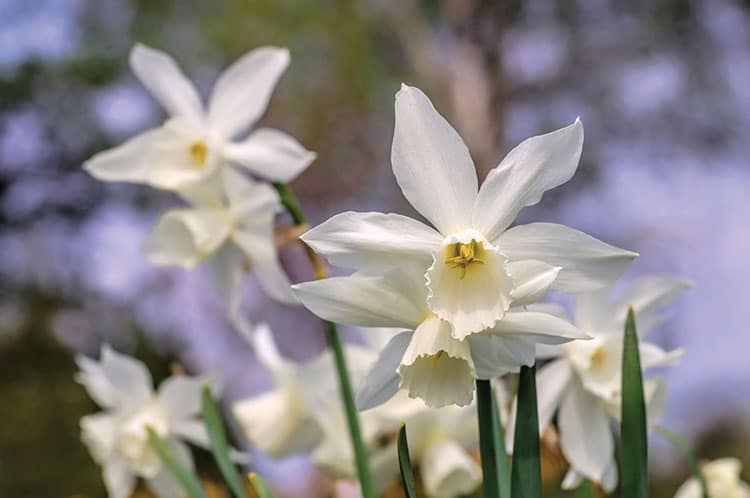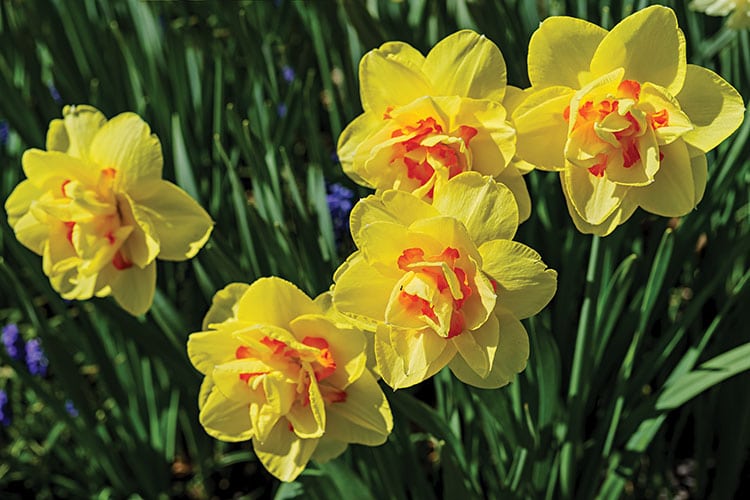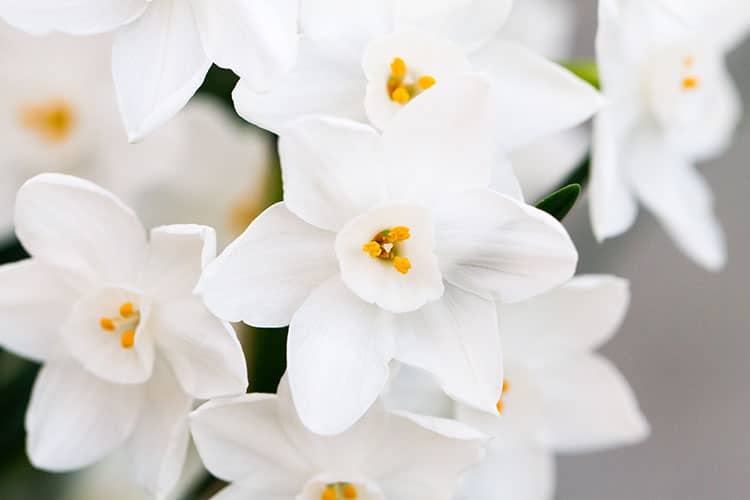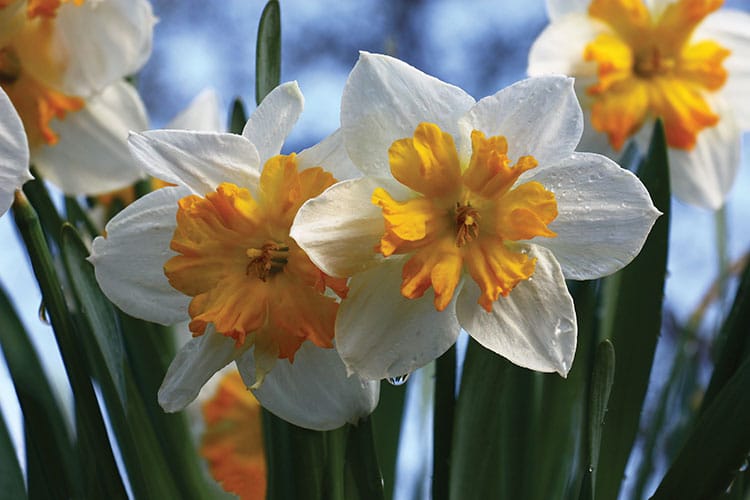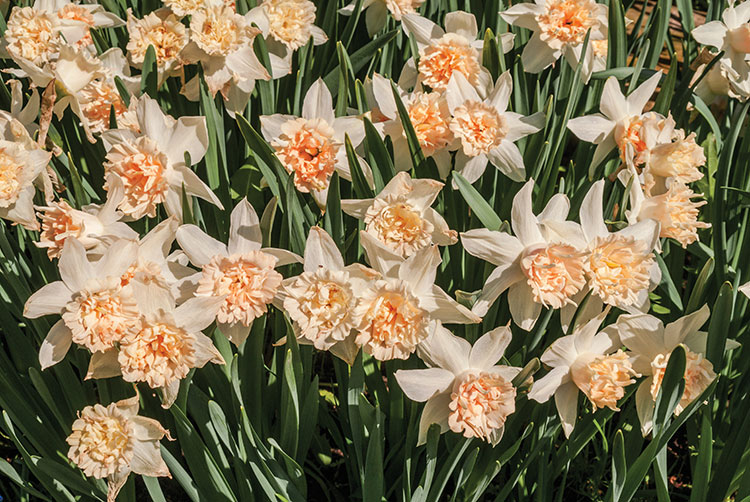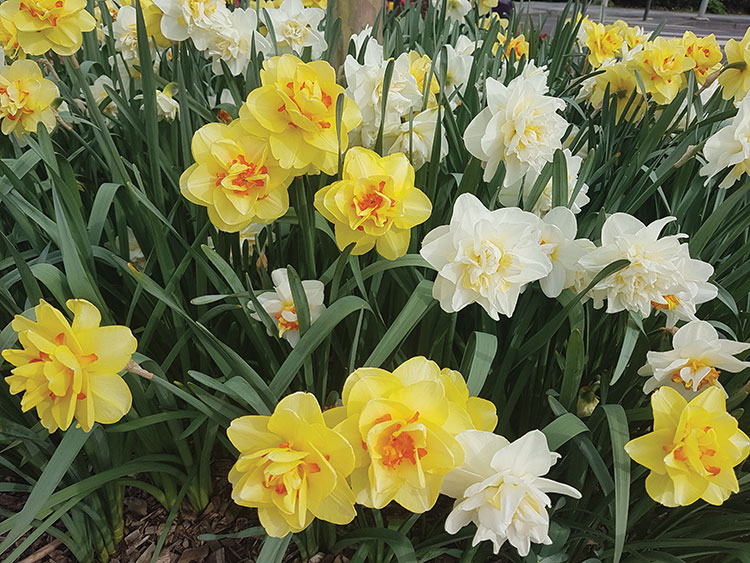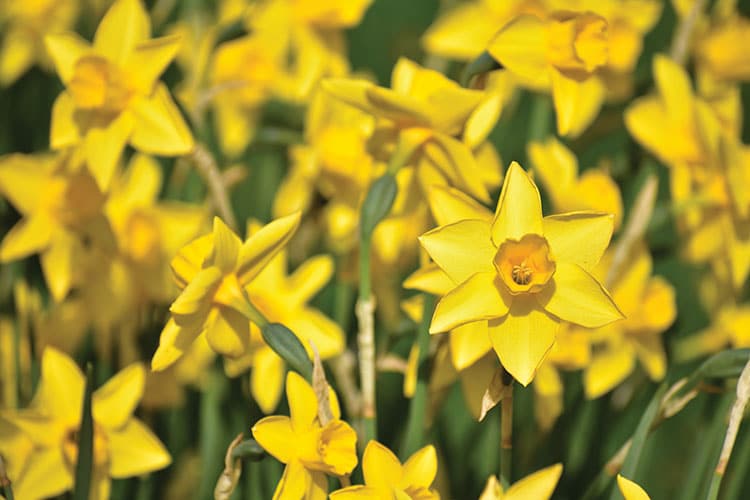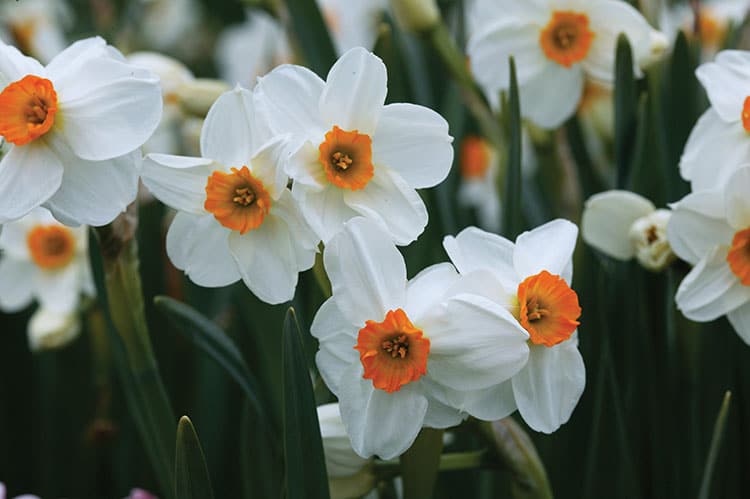Naturally Narcissus
Cape Cod Life / April 2020 / Home, Garden & Design
Writer: Brenna Collins
Naturally Narcissus
Cape Cod Life / April 2020 / Home, Garden & Design
Writer: Brenna Collins

Each year, these iconic blooms herald the trumpeted arrival of spring
The arrival of spring marks the reemergence of colorful hues in our wardrobes, homes, and of course, in nature. Amidst the gardens of Cape Cod, the narcissus’ iconic yellow varieties serve as a cheerful token that spring has sprung, filling onlookers with joy and hope for brighter days ahead. More commonly known as the daffodil or jonquil, the trumpeted flower has earned various symbolic connotations, including future prosperity, happiness, and curiously, self-absorption.
The word “narcissism” traces back to the ancient Greek myth of Narcissus. As told in Ovid’s “Metamorpheses”, Narcissus was the exceptionally handsome son of a nymph and river god, whose mother was warned that he would only live a long life if he never saw himself. As he grew up, countless suitors were heartbroken over his rejection. His most famous encounter was with a nymph named Echo, who, when rejected by Narcissus, called after him until nothing was left of her but her voice. An angry goddess led Narcissus to see his own reflection in a pool, where he fell so in love with himself that he could not look away. As he began to melt away, the narcissus flower sprung up as a lasting reminder of the perils of egoism.
Armed with an influential myth, numerous symbolisms, and an exquisite appearance, the narcissus has a worldwide presence today. The flower originated in the Mediterranean and was gradually carried across continents, arriving in North America with early settlers. In our own backyard, millions of daffodils bloom across the Cape and Islands each year, closing out the winter and adding to the quaint, mystical nature of our seaside grounds.
Grand celebrations are held here each spring, many centered around daffodils, to celebrate the season. Nantucket’s famed Daffodil Festival will kick off on Friday, April 24th this year. The joy-filled weekend includes the Nantucket Historical Association’s Flower Power Party, an antique car parade, art shows, contests, and the Nantucket Daffodil Flower Show, showcasing a striking array of daffodil varieties. A trip to the island for the festival will surely lift your spirits into spring amidst the quirky, cheerful attire sported by attendees and the plethora of daffodils in bloom.
Bringing this beloved flower into your own garden involves thought and preparation, beginning with choosing the species. According to the National Daffodil Society, there are up to 200 daffodil species and 32,000 hybrids to choose from. Whether you prefer Paperwhites or the classic trumpeted Dutchmaster, each variety is remarkable and can thrive in slightly differing environments. Regardless of the species, the narcissus’ hearty nature is a worthy addition to your garden, blooming each year to welcome the spring season and adding a gorgeous pop of yellow, orange, white or even pink to your grounds.
After stumbling upon a field of daffodils, British poet William Wordsworth published “I wandered lonely as a Cloud” in 1807. Touched by their beauty, Wordsworth wrote,
“When all at once I saw a crowd,
A host, of golden Daffodils;
Beside the Lake, beneath the trees,
Fluttering and dancing in the breeze.”
As you witness the fluttering and dancing of your daffodils blooming this spring, may you be filled with pride in your caretaking, and with the same awe as Wordsworth strolling among a sea of blossoms. The following photos showcase an array of some favorite blooms that will certainly spruce up your springtime garden and fill your soul with sunshine.
NARCISSUS CARE TIPS
- Daffodils need sunlight and moisture. Seek out a sunny spot with good drainage for planting, like an area with a slight incline.
- Near the end of fall, plant your bulbs at least three inches deep with a few inches in between one another.
- Watering is essential: after they are planted, continue watering up until three weeks after blooming. In the summer season, the soil can be kept drier.
- Most varieties can be left in the ground for up to five years. Next year’s bloom is made right after flowering is complete.
- Remove just the bloom after it completely fades. Removing it too early may negatively impact next year’s bloom.
- When presenting daffodils in the home, place them in a vase on their own, as the makeup of their stems can aggravate other flowers.
- Insider’s tip: the beautiful tête-a-tête variety is one of the first to bloom and widely available in gardening centers!
Read about another great spring addition to your garden here: Daylilies!

